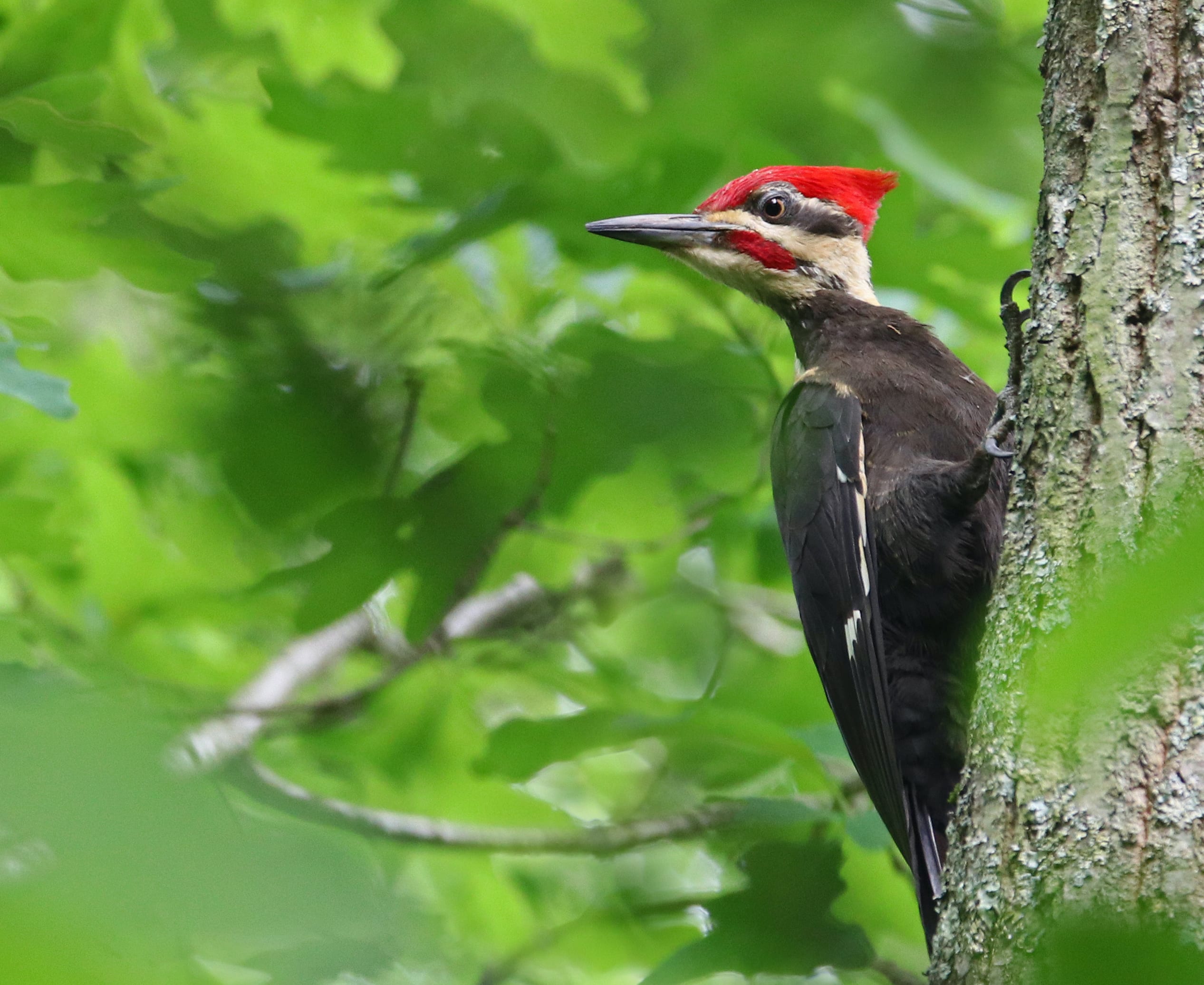
A pileated woodpecker. Photo by Mark Nale | For the Gazette

A pileated woodpecker. Photo by Mark Nale | For the Gazette
Whether hiking along Bear Meadows Bog, walking around the Soaring Eagle Wetland or deer hunting on a mountain, I am always thrilled to see a pileated woodpecker. Sure to make an impression on first time viewers, the pileated woodpecker with its large size and flashy color pattern will catch and hold the eyes of even the most-seasoned bird watchers.
Standing 16 to 19 inches tall, the pileated is the largest woodpecker in the northeast. Its closest relative, the slightly larger and more southerly ivory-billed woodpecker, is believed to be extinct.
Other Keystone State woodpeckers include the downy, hairy, red-headed and red-bellied woodpeckers, as well as the northern flicker and the yellow-bellied sapsucker. Even the largest of these is considerably smaller than a pileated woodpecker.
Their loud “kuck, kuck, kuck, kuck” calls, as well as the male’s repeated pounding or drumming on dead trees, are unmistakable sounds that resonate throughout the forest. These large woodpeckers are also known as logcocks, wood hens and Indian hens.
The body of a pileated woodpecker is mainly black, but sizable patches of white show beneath each wing when it takes to the air. The heads of both sexes are accented with white stripes above and below their eyes and topped with large scarlet crests. Males have additional red forehead and cheek markings.
Apart from their size, unmistakable call and classy plumage, pileateds can be recognized by their irregular flight pattern. The large birds alternate between a flap and a glide, which causes them to weave up and down as they fly.
If you always look up for pileated woodpeckers, you will miss many. They spend a lot of time ripping apart rotten stumps and downed logs — just a foot or so off the forest floor.
Mature deciduous, coniferous or mixed forests are their favored habitats. An abundance of dead trees, stumps and logs usually found in older forests heighten the habitat’s value to pileateds.
The emerald ash borer and hemlock wooly adelgid are increasing woodpecker habitat throughout the state. It is likely that the hundreds of thousands of dead and dying trees will contribute to an increase of pileated and other woodpecker populations.
The dead wood provides woodpecker den sites as well as homes for their favorite food, the carpenter ant. Although wood hens are year-round residents in all 67 of the state’s counties, they are least common near cities and in farming country.
During the 1800s, the clearing of Pennsylvania’s land for farming and homesteads , along with the harvesting of our old-growth forests, left little prime habitat for the pileated woodpecker. They became very rare. As our second-growth forests aged and small farms reverted to woodlands, pileateds became common again. I’ll quote from local author Nick Bolgiano in the Second Atlas of Breeding Birds in Pennsylvania:
“On Pennsylvania Christmas Bird Counts (CBC), only three pileateds were reported between 1900 and 1930, and yearly tallies remained in the single digits until 1950. Counts have been steadily increasing since then, to more than 700 statewide in some recent years.”
In late December or early January, my group of two to four people alone usually tally two to six pileateds along our Marsh Creek route during the Bald Eagle State Park Christmas Bird Count. It is hard to believe that this is more than what was reported across the entire state 100 years ago.
During the State College circle CBC — December 20, 2020 — counters tallied 14 pileated woodpeckers. The day before, participants in the nearby Lewistown CBC tallied an amazing 38 of these striking birds.
According to data reported in the Pennsylvania Atlas between 1989 and 2009, there has been an increase in possible, probable and confirmed nesting sites over most of the state.
Our area has at least a few pileated woodpeckers in all suitable habitat.
Although logcocks range from mountain top to valley, observers often find their nests near water. Large nest cavities, 10 to 24 inches deep, are chiseled high in dead trees.
The female usually lays four eggs, which are incubated by both sexes. Both parents feed the nestlings.
In addition to eating carpenter ants, pileated woodpeckers are adept at stripping bark from trees to get at wood-boring beetles, such as the emerald ash borer. While searching for grubs, beetles or ants, they often excavate their characteristic rectangular holes only a foot or so off the ground.
They also eat acorns, as well as the fruits from black gum, dogwood, multiflora rose and greenbrier.
The logcock’s eerie cry, undulating flight and impressive size will certainly be remembered by anyone lucky enough to encounter it in the woods.
Mark Nale writes about the outdoors for The Centre County Gazette.
Receive all the latest news and events right to your inbox.

80% of consumers turn to directories with reviews to find a local business.